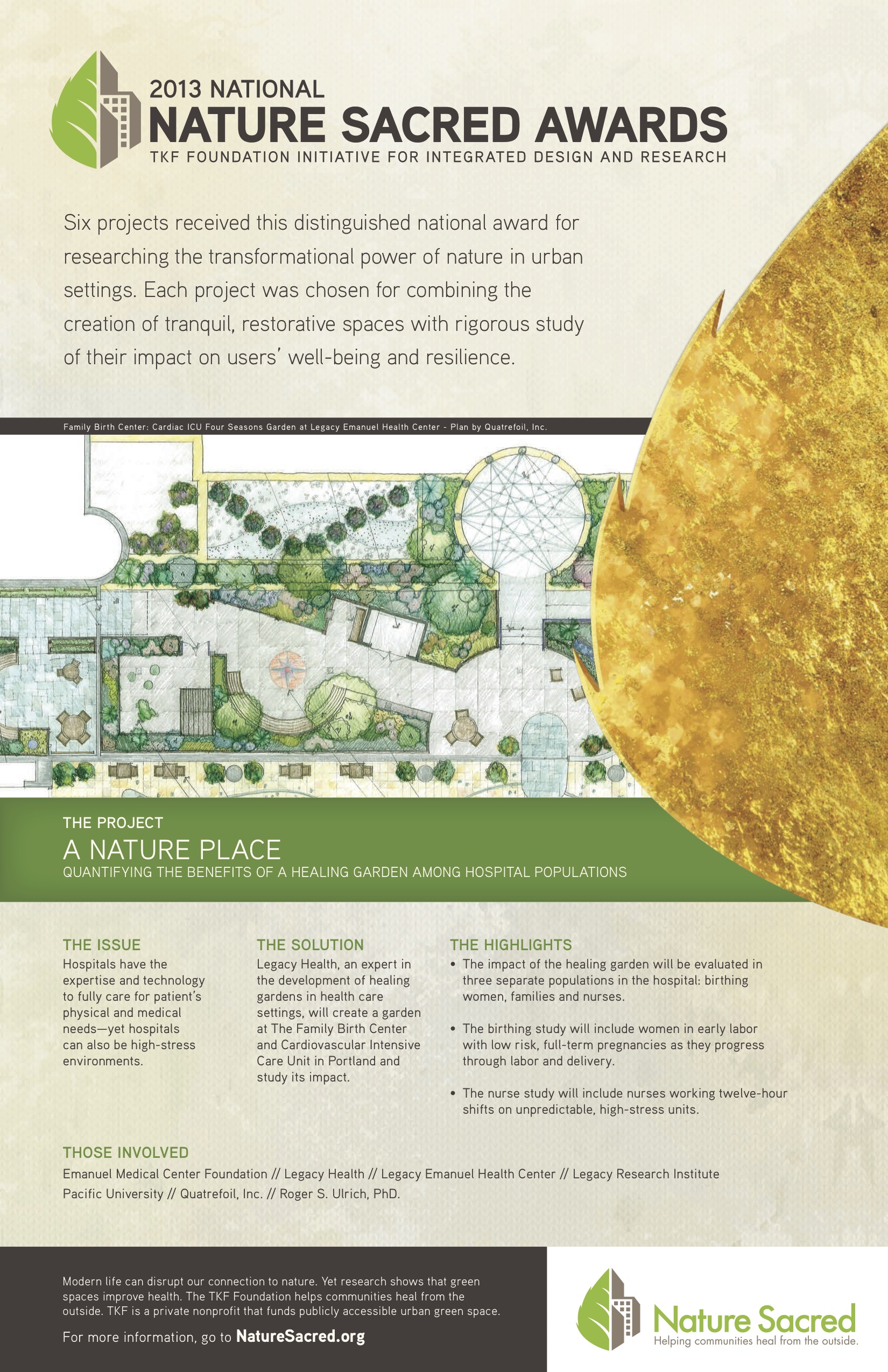 Six projects received this distinguished national award for researching the transformational power of nature in urban settings. Each project was chosen for combining the creation of tranquil, restorative spaces with rigorous study of their impact on users’ well-being and resilience. See the full list of projects here. Print version of poster. More A Nature Place team member interviews: Dr. Alar Mirka, Dr. Roger Ulrich.
Six projects received this distinguished national award for researching the transformational power of nature in urban settings. Each project was chosen for combining the creation of tranquil, restorative spaces with rigorous study of their impact on users’ well-being and resilience. See the full list of projects here. Print version of poster. More A Nature Place team member interviews: Dr. Alar Mirka, Dr. Roger Ulrich.
A preterm baby — a child born before 37 weeks of pregnancy — is at heightened risk of physical and developmental problems. The earlier the birth, the greater the risk.
And a mother’s stress is a significant contributor to preterm delivery.
Realizing this, Legacy Health is combining its traditional medical expertise with the healing power of open green spaces to create a four-season garden at the Family Birth Center and Cardiovascular Care Unit at its Legacy Emanuel Medical Center in Portland, Oregon. Patients and their families will be able to walk through and rest in the garden, adding to their peace of mind and rebuilding their strength. There will even be special equipment to make sure less-mobile patients — such as pregnant women on bed rest and patients with reduced mobility — can spend time outside.
“It’s a place you can use on your own, 24-7. Any time you want, you can gather your family out there,” said Teresia Hazen, MEd, HTR, GMHP, Coordinator of Therapeutic Gardens and Horticultural Therapy at Legacy. “It could be the first time that nine children come and see Grandpa, who’s waiting for a heart transplant.”
Legacy Health is a non-profit health system with six hospitals serving the Portland, Oregon, community and the hospital is one of only two Level 1 Trauma Centers in the state.
The goal of the healing garden is to give patients a much-needed place that speaks to their psychological, physical and spiritual needs, while also giving the hospital the opportunity to study and quantify the benefits that open green spaces can have on patients, their families and even health care professionals under stress.
At its heart, said Hazen, is showing people in stressful and often dire medical situations that everything isn’t set in stone. In a hospital a patient can quickly feel as if they are bound to their room with nothing to do except wait and follow a physician’s instructions, leading to the feeling that they don’t really have any control over their situation. Being able to make the choice simply to step outside and sit in a garden can go a long way toward helping that.
“Choices give people a sense of control, and when people feel they have that there are many positive benefits,” she said. Those benefits include greater happiness and cooperation with treatment, to name just a couple.
The planned healing garden will replace a hardscape terrace built in the 1970s, when designers and developers had less of an understanding of incorporating the benefits of nature into architectural planning, said Hazen. The current plan is to break ground this July, open in December, then take April to October 2014 to run the studies, with the results set to publish around October 2015. Roger S. Ulrich, PhD, EDAC, is the studies’ principal investigator.
Legacy plans three separate studies. Hazen said that while the Legacy Research Institute can have anywhere from 80 to 110 ongoing studies at a given time — clinical trials on the safety and effectiveness of a new medicines, treatments and devices — this will be their first experience with studying the intersection of stress and nature and health care.
The first study is a birthing study of women with full-term, low-risk pregnancies, meaning no women with scheduled C-sections or complications. The hospital will use special equipment to monitor the stress levels and heart rates of both the mothers and their babies through labor and delivery. Hazen noted that the ability to quantify these factors in utero surprise people.
“It costs money, but we can measure stress [of babies in the womb],” she said.
The second study will look at family members of patients who stay in the hospital intensive care unit (ICU) for a sustained period of time. Researchers will analyze how the healing spaces can help people cope with major stress while their loved ones face life-threatening illnesses and injuries.
But it’s not just the patients, their families and their friends who deal with stress in the hospital’s ICU. The nurses who work 8, 10, even 12-hour shifts can also suffer a very real physical and emotional toll. In its third study, Legacy will analyze how these critical health care professionals can be affected by the new garden, tracking their moods, attendance and a variety of health factors.
For Hazen, promoting the healing powers of nature in the hospital doesn’t stop with the planned garden. She said that wherever she goes in the hospital she’s constantly educating staff members — from doctors to the workers in the cafeteria — how just three to five minutes of time spent outside can be a “restorative experience.”
“In well-designed nature settings relaxation starts without any directed action — it just happens.”
